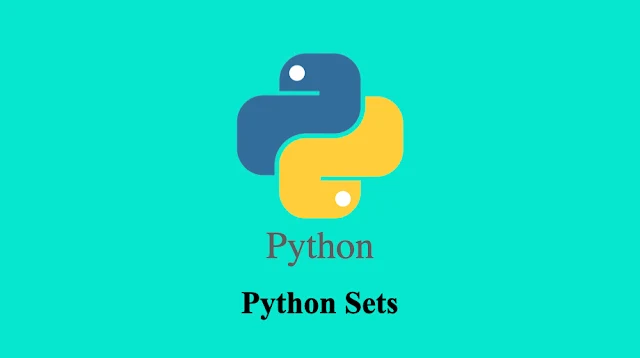Today, we are going to look at another exciting program in python called python set.
A set is an unordered group of unique elements which are used to carry out math operations involving sets such as intersection, union, or symmetric difference.
In this session we are going to see how sets are created, its syntax and its set operation, its various user-built functions.
Creating a set
You can create a set by putting all elements in curly braces {} or by using set (), one of python’s built-in function. A
Syntax of a set
My_set={}An example of a set of integers
my_set=(1, 2, 5, 6, 10, 15)An example of a set of strings
my_set={‘a’, ‘e’, ‘w’, ‘d’, ‘g’, ‘u’}Changing elements on a set
We are able to change elements in a set but because elements in a set are unordered we can’t access or change items through methods such as indexing or slicing like what we did earlier with strings and list. Instead we are going to use to the add() or update().
The add() method
We are able to add just a single element to a set
my_set={2,4,6,10}
OUTPUT
Update() method
We can add multiple elements in a sets
my_set={2,4,6,10}
OUTPUT
Removing elements on a set
We are going to use the remove() or the discard() methods to remove specific elements in a set. Both methods still give the same result.
my_set={'a','j','o','i'}
OUTPUT
Set operators
We can use sets to perform various set operations. To do this we will use different pythons operations, some of which are:
Set union
It refers to a set all that contains all the elements from the given sets. The result of this union is a combination of elements which are ascending order.
X={1,5,3,4,5}
OUTPUT
Set intersection
It’s a set of common element between. The result of this set operator is a set of elements which are arranged in ascending order.
X={1,5,3,4,5}
OUTPUT
Set difference
We are going to look for a set of elements that is found in one set but not the other set.
This is mostly done using the difference method() or the -operator
X={1,5,3,4,5}
OUTPUT
Set symmetric difference
It refers to the set of elements that is not common to both the given sets, we are going to use the symmetric_difference() method or the ^ operator.
X={1,5,3,4,5}
OUTPUT
Iterate through a sets
We are going to use the ‘for loop’ to iterate through a set.
letter={'a','b','c','d'}
OUTPUT
Frozenset
A frozen set takes the characteristics of the given element. But once this set has been assigned, we can no longer change its elements. Due to this it’s unchangeable nature, we won’t be able to use the python methods such as add() or remove() to change elements within the elements.
Just like in the other data type functions, we are able to use built –in functions with sets.
Len()
We use it to know the number of elements in a set
my_set={'a','b','c','d'}
Membership test
We can use the ‘in’ or ‘not in’ to test the existence of an element in a set
my_set={'red','violet','blue','yellow'}
OUTPUT










Comments
Post a Comment
Please do not enter any spam link in the comment box.